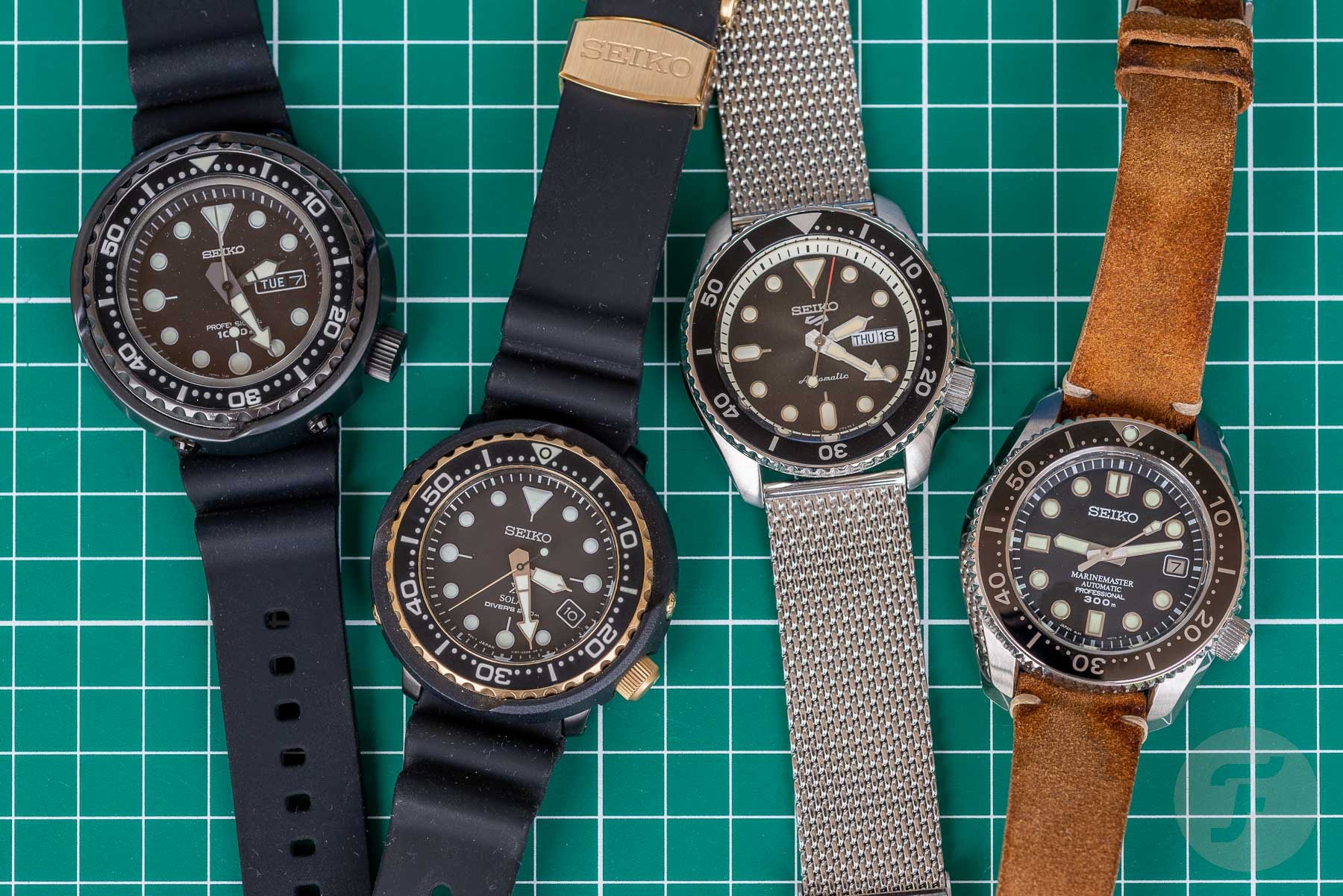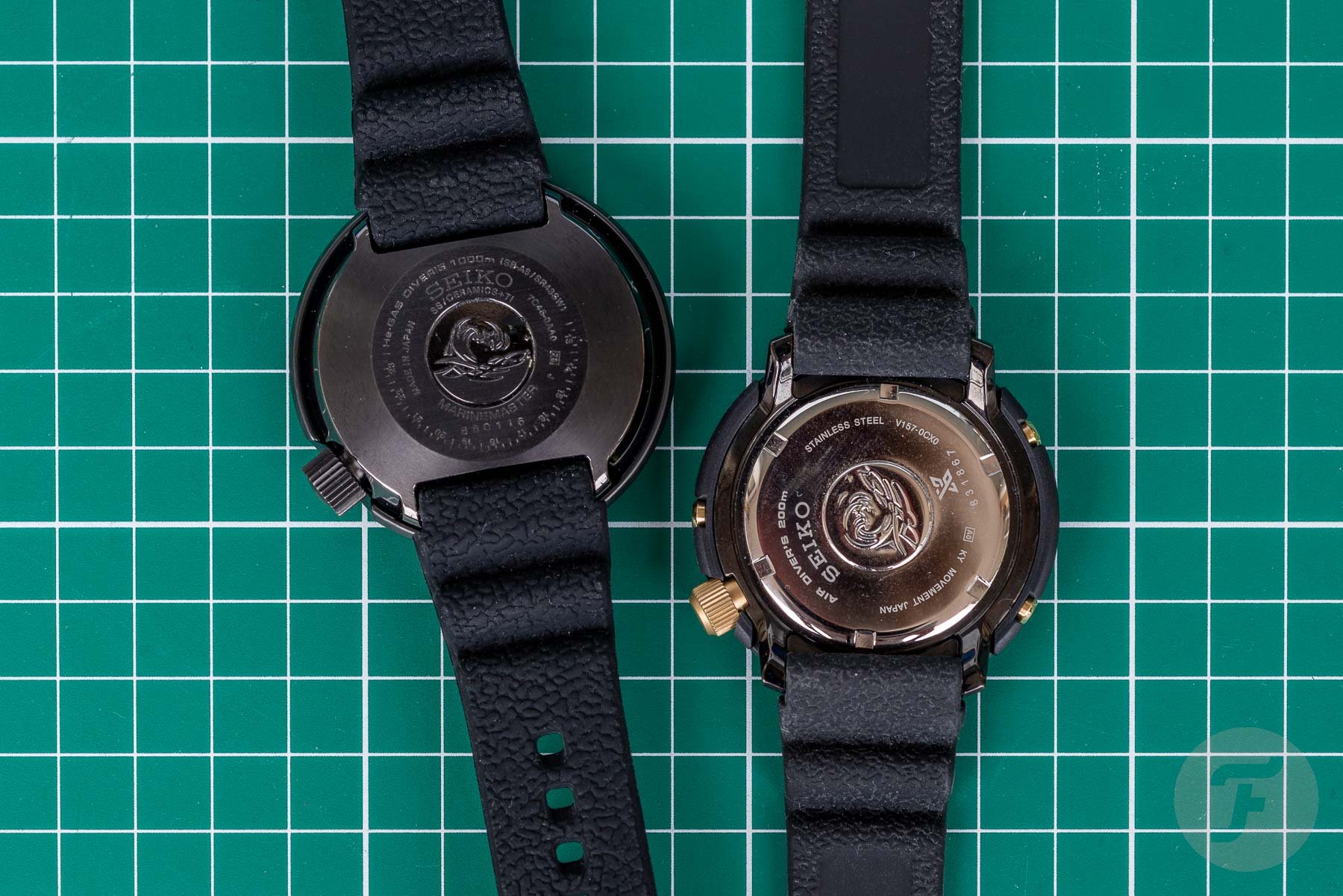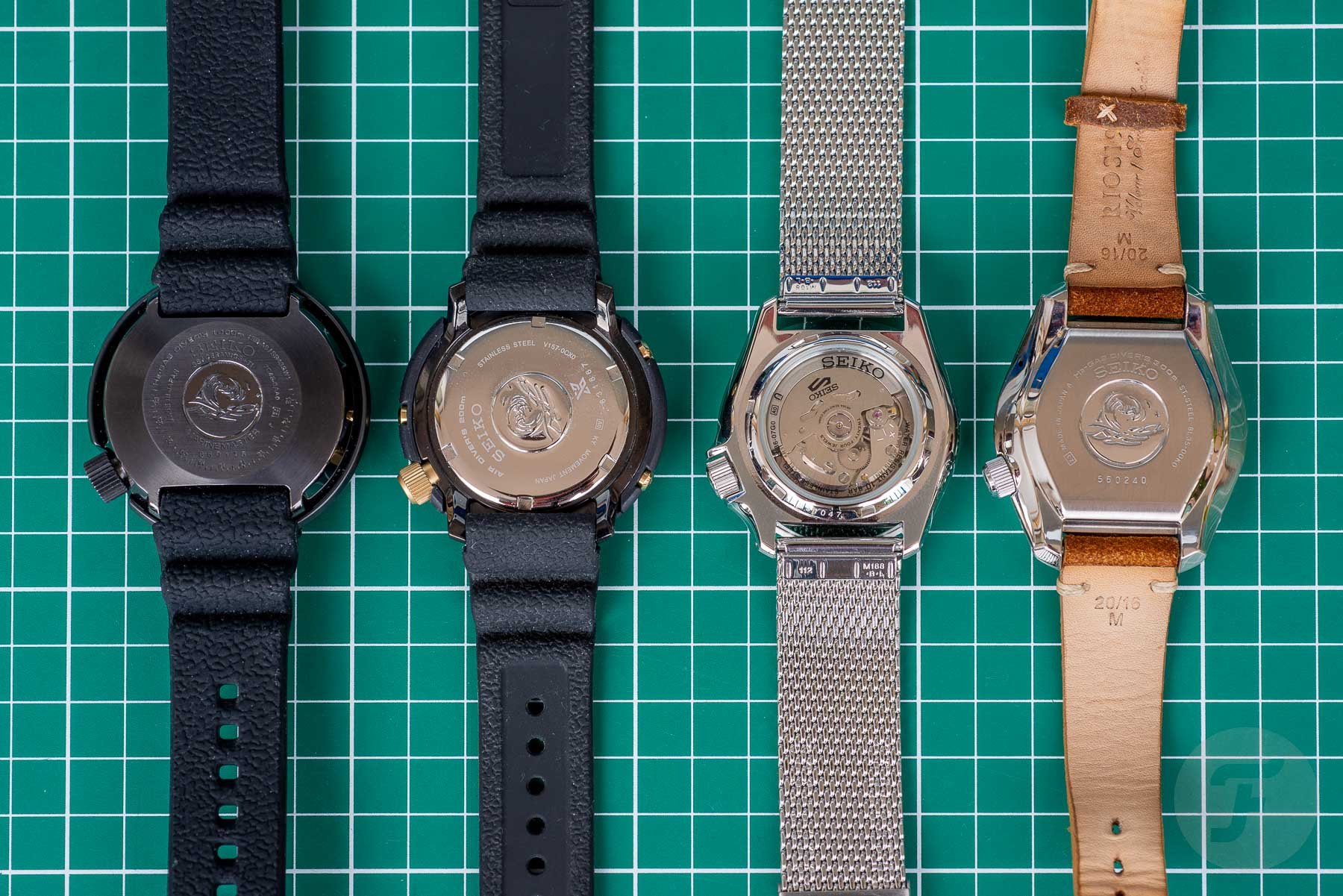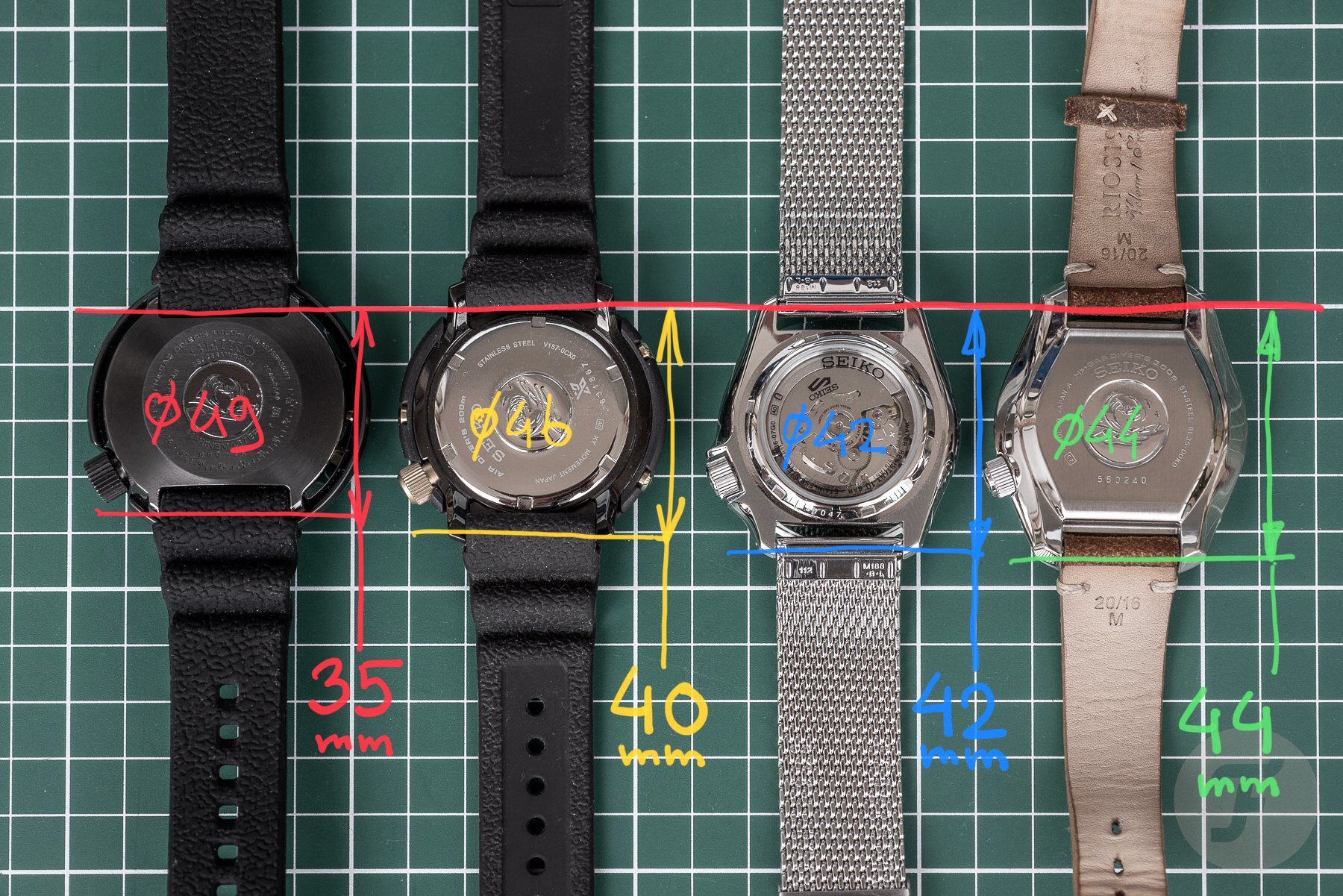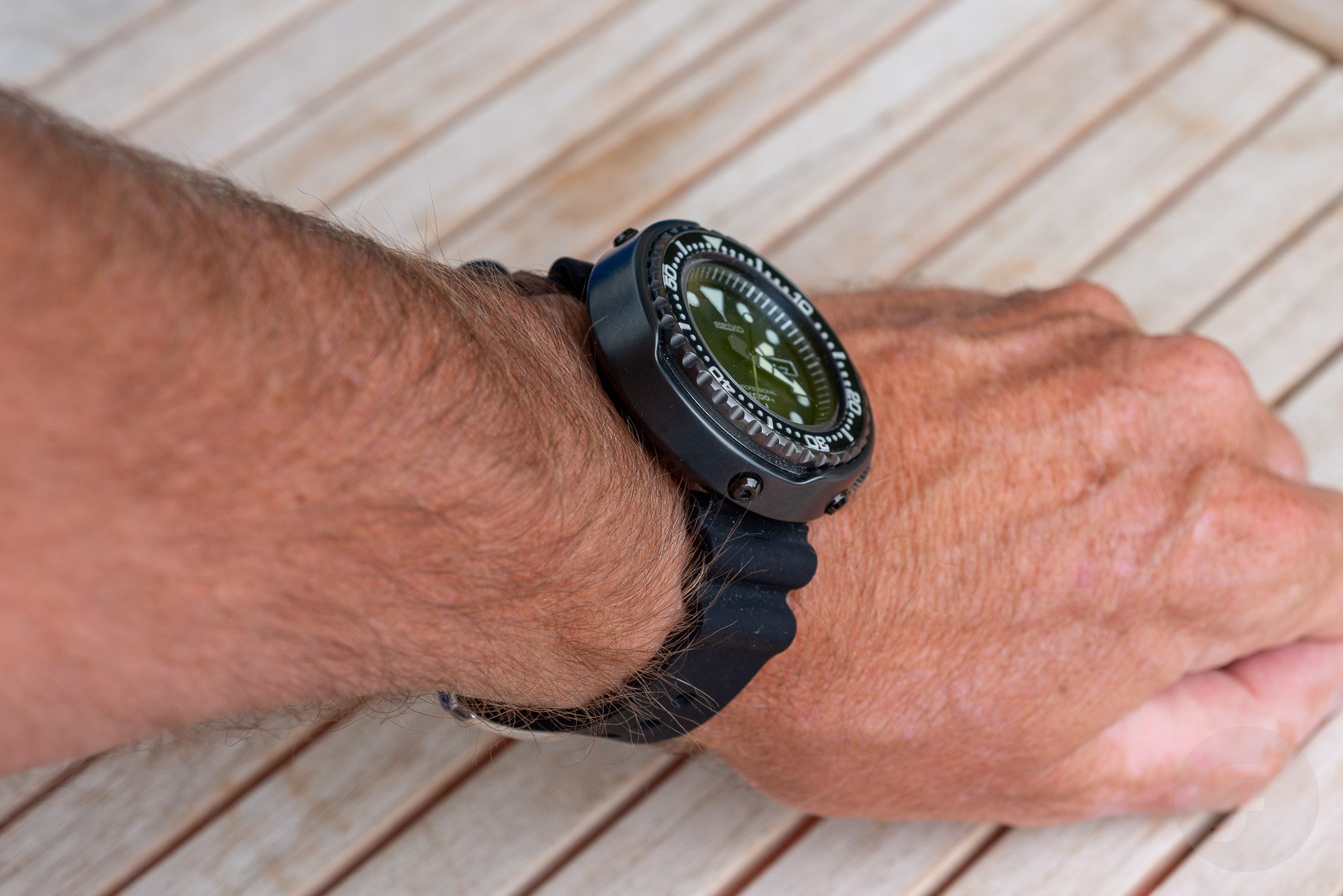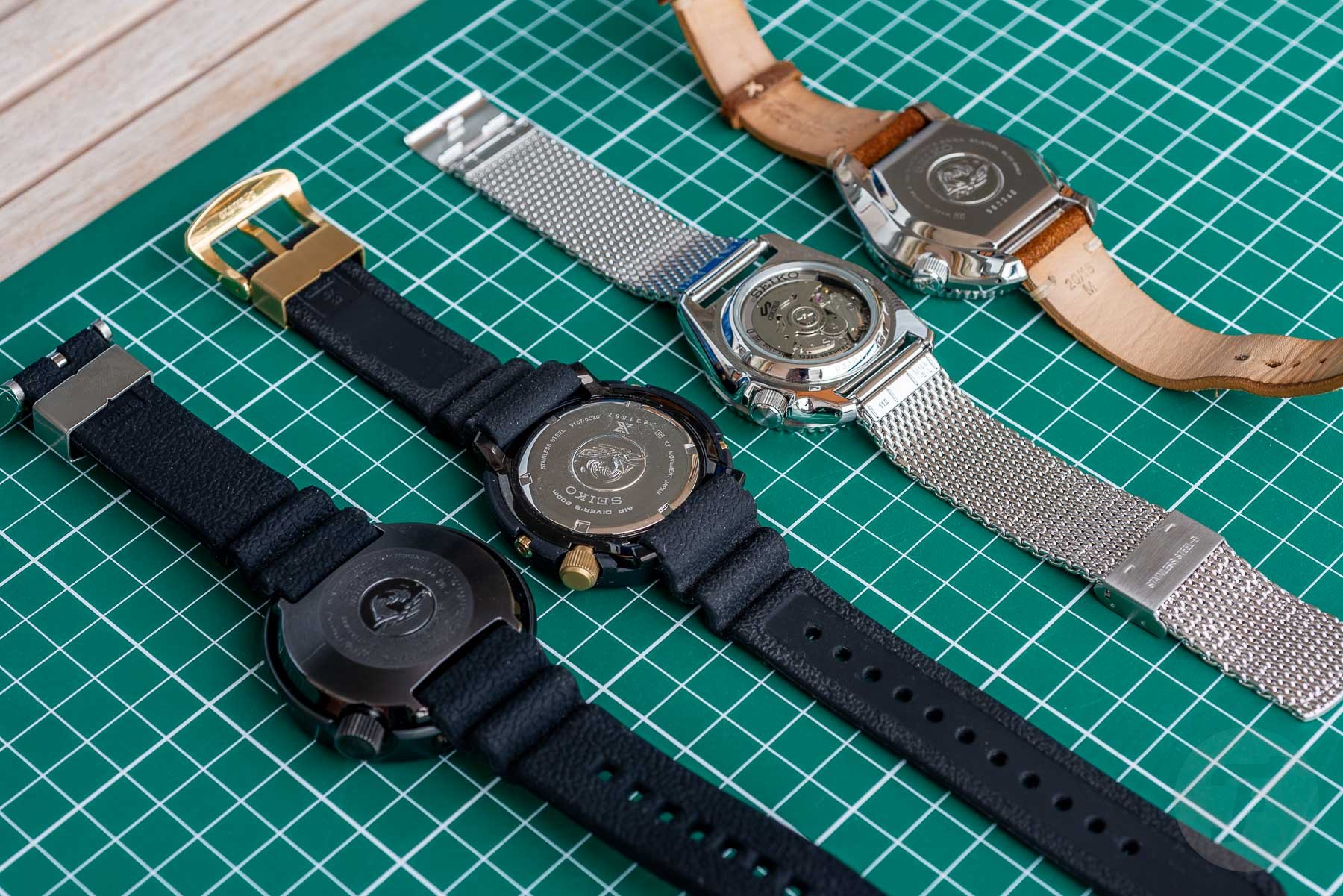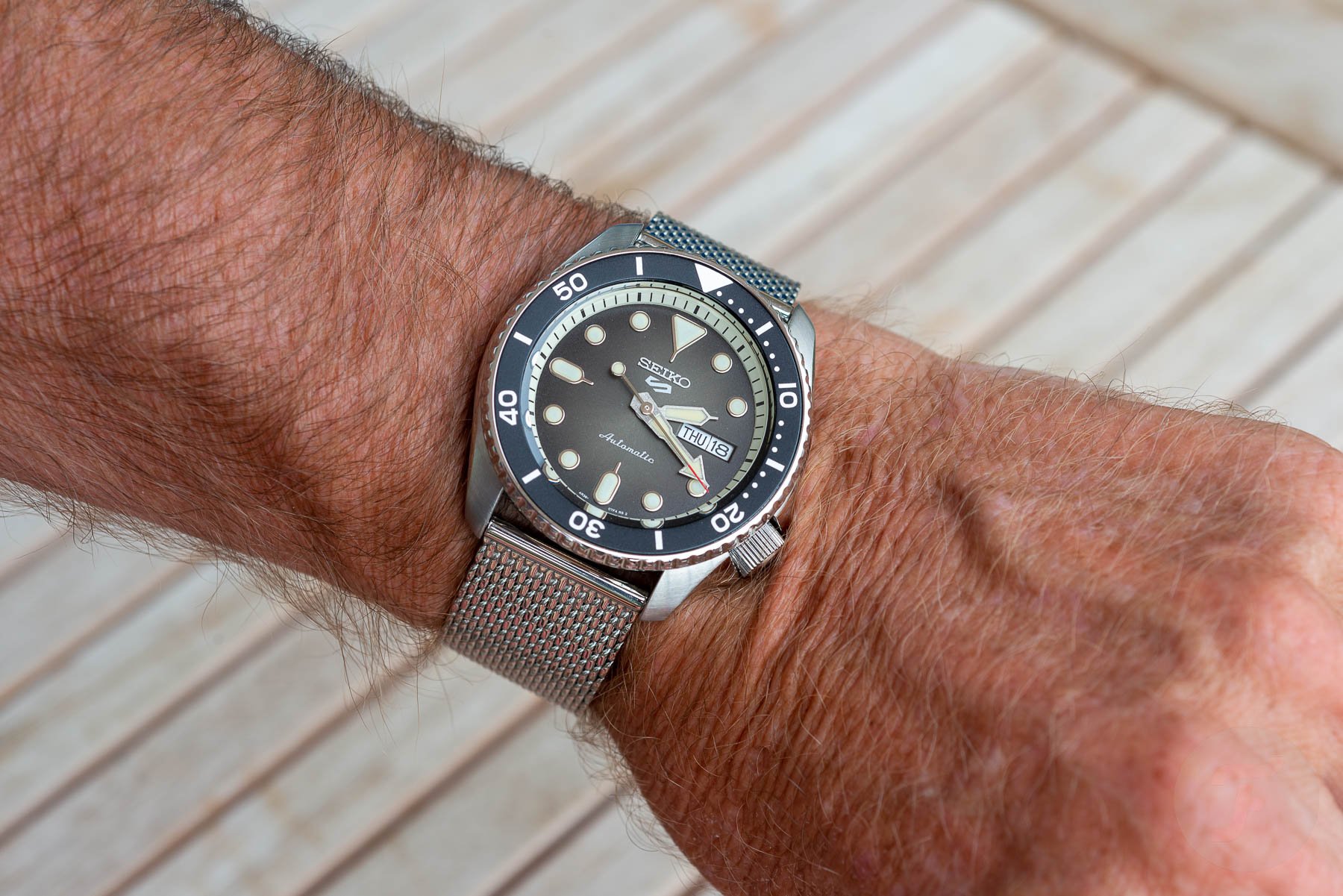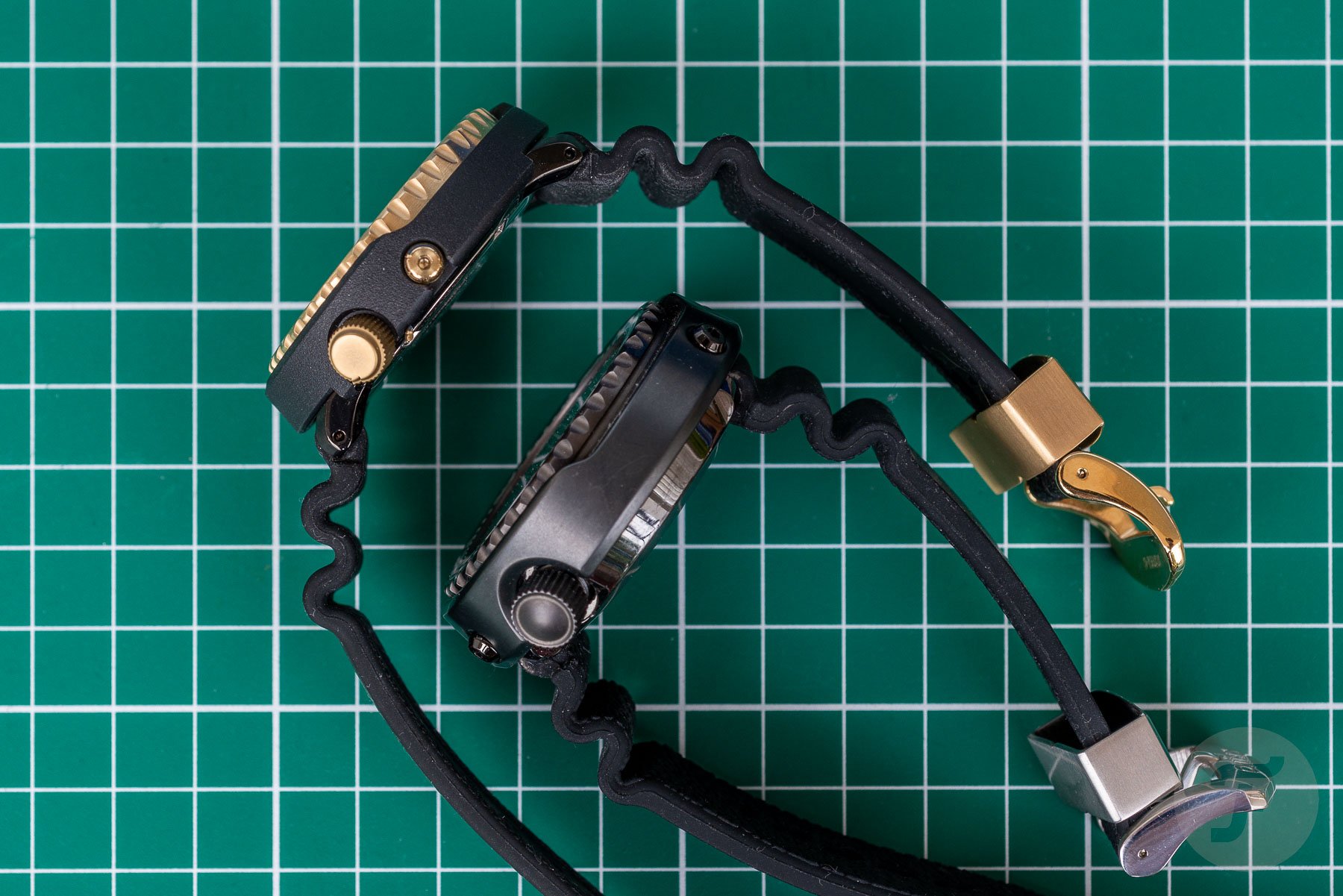Why A Seiko Tuna Wears So Well Even On Smaller Wrists
To some, this article might look like a tedious one full of numerical jibber-jabber. But it aims to be a write-up about comfort and, specifically, how well larger watches can wear, even if they “shouldn’t” fit your wrist. Consider, for instance, the Seiko “Tuna”.
With a case diameter of roughly 50 millimeters, a real-deal monobloc Seiko Tuna seems way too large for most of us to wear. On the contrary! It does wear quite comfortably, even on smaller wrists. How come? It’s all about what is generally known as “lug-to-lug distance” and, in this case, the lack thereof. To explain and visualize differences in watch sizes, lug-to-lug, and spring-bar-to-spring-bar dimensions, I’ll use four Seiko divers’ watches. Well, three Seiko divers’ watches and a Seiko sports watch. And besides these four watches, I used my own 17.5cm (6.9″) wrist.
Real-deal Tuna
Before I get stoned by Tuna fans like M2, let me explain my use of the term “real-deal Tuna”. The titanium monocoque case — often called “monobloc” — was THE most influential and innovative design element when Seiko introduced the ref. 6159-7010 in 1975. At that time, watch manufacturers faced trouble when their divers’ watches were used professionally for helium saturation diving at great depths. Dive watches had their crystals blown off during decompression. This showed that inert helium gas could enter a watch case through regular gaskets under high external pressure. The helium gas then built up pressure inside of the watch, equaling the pressure outside of the watch at that depth. Then, while decompressing, the helium gas couldn’t get out quickly enough, and the pressure inside would cause the glass to blow off.
Monocoque to the rescue
Some manufacturers looked for a solution that would allow the the pressurized helium to quickly escape from the watch during decompression. Not Seiko. Under the patronage of Ikuo Tokunaga, Seiko chose to find a way to prevent helium from entering the watch in the first place. If helium couldn’t get in, no pressure could build up inside the case. Seiko’s engineers found a solution in a titanium monocoque casing combined with a particular type of gasket. In 1975, Seiko used this solution for the first time in the model YAQ028, ref. 6159-7010. Among enthusiasts, this model is now referred to as the “Grandfather Tuna”.
Since then, many models have followed, and watch lovers have embraced the “Tuna” nickname. While sporting the iconic Tuna shape and looks, most of these models use a standard case construction with a removable back. Only some have the same monocoque construction that the original had in 1975. This difference influences wearing comfort, and I’ll explain why. But let’s first agree that I’ll use the term “real-deal Tuna” for watches using the original 1975 monocoque construction without a case back.
Lug-to-lug
Regular watches — let’s say those with a case diameter of 36 to 44mm — generally have a lug-to-lug distance between 42 and 52mm. These will comfortably fit wrists with a circumference between 17 and 20cm. Larger-diameter watches usually require a larger wrist to work well or are meant to have an oversized fit. However, the diameter is not the only measurement that determines if a watch fits comfortably or not. It’s very much the so-called “lug-to-lug distance” that influences how a watch will wear on your wrist. Smaller wrists benefit from smaller lug-to-lug dimensions. That’s why the monocoque Seiko Tuna models wear so well, even though their diameter is around 50mm.
From spring bar to spring bar
The monocoque Seiko Tunas do not have lugs per se, meaning that there’s no real lug-to-lug distance. Factually, however, what does the lug-to-lug length indicate? Usually, it is the distance between the tips of the lugs on either side of the case. Through this measurement, we can more or less determine the distance between the two strap ends. However, it also depends on how far the holes for the spring bars are drilled from the tips of the lugs. To make myself clear, ultimately, the distance from spring bar to spring bar best indicates how a watch will wear.
A pattern emerges
Generally, for watches with regular lugs, the difference between the lug-to-lug and spring-bar-to-spring-bar dimensions is about 6mm. That means that a watch with a lug-to-lug distance of 48mm will have a spring-bar-to-spring-bar dimension of approximately 42mm. With regular lug-to-lug measurements between 42 and 52mm, standard spring-bar-to-spring-bar dimensions are between 36 and 46mm. Usually, this measurement isn’t indicated in the technical specifications. Sometimes the lug-to-lug measurement is. But in checking a few watches that were lying around our office, these observations proved to be pretty accurate.
Focus
Let’s leave the millimeter measurements alone and focus on how larger watches with short spring-bar-to-spring-bar dimensions can wear. All of the Seikos that I took out have a relatively large diameter. Even the smallest, the 5 Sports, has an outside diameter of 42mm. This is not what someone with smaller wrists would usually look for. But it fits very well with a measurement of only 42mm from spring bar to spring bar. That is more or less equal to a “regular-shaped” watch with a diameter of 36mm.
Real-deal Seiko Tuna
If this article inspires you to try on a real-deal Tuna with a monobloc casing, it is possible. Almost all Tunas in Seiko’s current lineup are of the regular-case-back type, but Seiko still offers some Tuna models in its famous monobloc construction. Currently, there are at least two versions available. One is ref. SLA042 with the GS-derived 8L35 caliber, and one is ref. S23631 with Seiko’s enchanted 7C46 quartz caliber. If you choose to go for quartz, you might still be able to find a 35th-anniversary limited edition, ref. S23635. Please note that the models aren’t offered in all local markets. It might take some international hunting to get ahold of one.
Another way to find a real-deal Tuna to your liking is by searching the vintage and pre-owned models on offer. Specifically, the quartz-based models might be interesting, as technically, they didn’t change over the last 20 years or so. Seiko even introduced the valued and high-quality 7C46 quartz caliber back in 1986. If you want to learn more about the history and evolution of monobloc Seiko Tuna, I’ll suggest our article here, or simply type “Seiko Tuna” into our search field.
Notes
I used the following watches to visualize and explain the content of this article:
- Seiko SBBN011 “Darth Tuna”
- Seiko SNE498 “Solar Tuna”
- Seiko SRPD73 5 Sports
- Seiko SBDX017 Marinemaster “MM300” (on a Rios leather strap)
Nowadays, we make it a rule to indicate if an article is published as paid promotion, paid content, or sponsored in any other way. I would, however, like to point out that I wrote this article of my free will and based only on my personal belief. It wasn’t paid for in any way by Seiko or any other brand whatsoever. If you like, you can find me on Instagram @gerardnijenbrinks.

